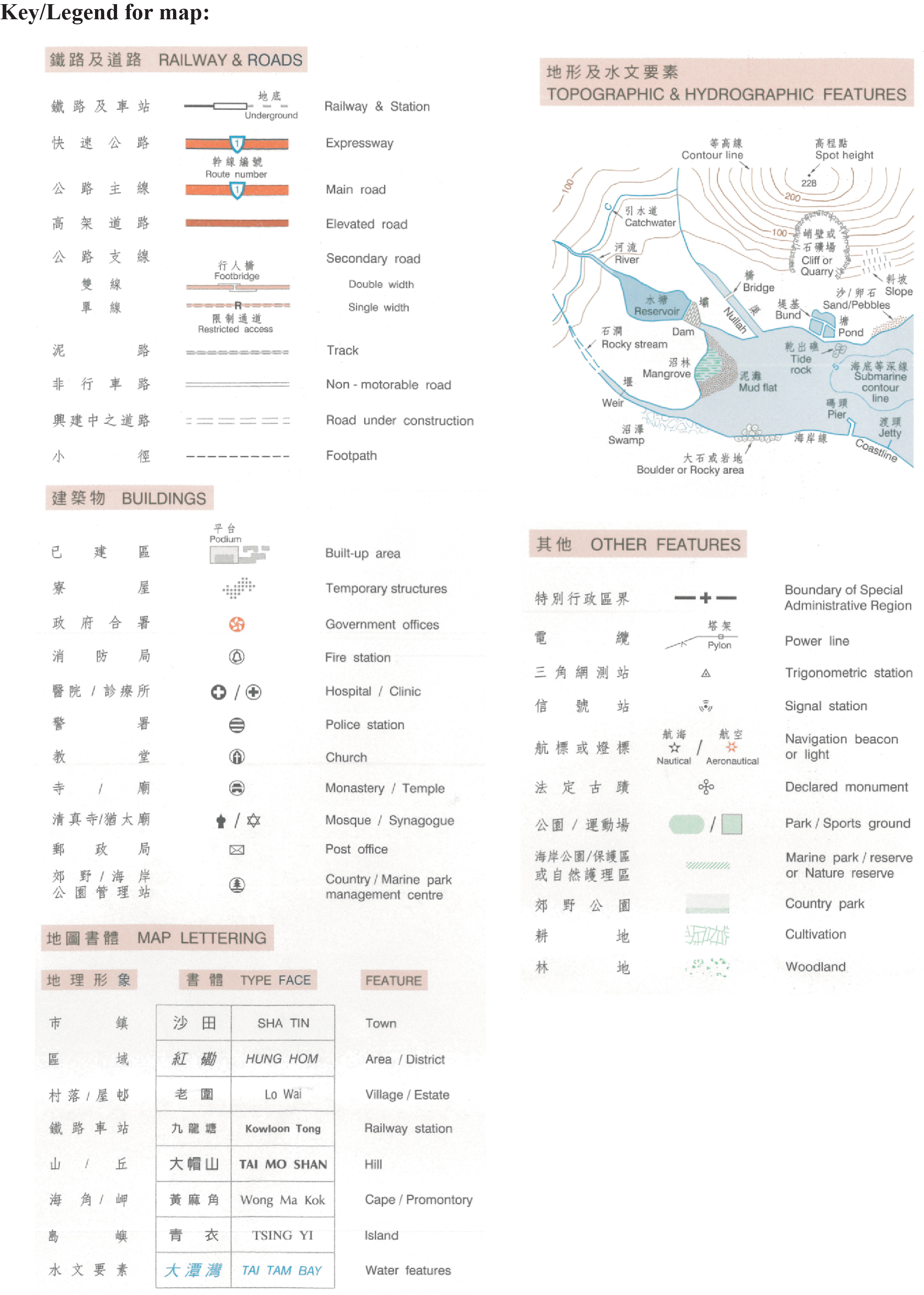| Date | November 2012 | Marks available | 10 | Reference code | 12N.2.bp.14 |
| Level | SL and HL | Paper | 2 | Time zone | |
| Command term | Evaluate | Question number | 14 | Adapted from | N/A |
Question
The map shows part of a city in Asia. The scale of the map is 1 : 20 000. The contour interval is 20 metres.


[Source: Survey and Mapping Office, Lands Department, Hong Kong Island and Kowloon, HM20C Series, Edition 14, Sheet 11, (2009). The map reproduced with permission of the Director of Lands. © The Government of Hong Kong SAR. Licence No. 62/2011]
Using map evidence, describe two characteristics of Area A which suggest it is a high-class residential area.
Using map evidence, suggest three reasons why Area B may be a suitable location for a manufacturing activity.
With reference to one named example, evaluate the success of a strategy designed to manage pollution in an urban area.
Markscheme
Possible answers include open space/landscaping, size and density of housing/buildings, curved/well-planned streets, cul-de-sacs or no-through streets, university, public transport access, lack of negatives (e.g.industry). Candidates should be awarded [1 mark] for each identified characteristic and [1 mark] for further description, brief justification/reasoning.
The area has excellent transport links and a container port, providing ease of access and import/export, proximity to coast/road/highway, proximity to residential areas for labour supply, open space / room for expansion, possibly lower cost land (perhaps reclaimed, flood risk, etc.). These may be possible brownfield sites that are suitable for development.
Candidates should be awarded [1 mark] for each identified reason and [1 mark] for a brief explanation, provided some mention is made of map evidence (grid reference, names, directions, distances etc.).
The type of pollution depends upon the case study chosen, but it should be a case study of urban pollution (as opposed to any pollution event). Strategies discussed may include water treatment and infrastructure, transport strategies, legislation, planning strategies etc.
The response should explicitly outline the strategy adopted to manage the pollution, with reference to specific names and locations.
Responses should provide a clear evaluation of the management strategy rather than simple description. Responses that are limited to description or do not make reference to a specific case study should not progress beyond band D.
Marks should be allocated according to the markbands.
Examiners report
Most candidates were able to identify factors such as the amount of green space or the configuration of the street patterns but did not refer to named areas on the map. There remained problems with topographic map interpretation and referencing map evidence.
Most candidates were able to identify factors such as the amount of green space or the configuration of the street patterns but did not refer to named areas on the map, though most were able to identify three reasons for manufacturing location in area B relatively easily. There remained problems with topographic map interpretation and referencing map evidence.
Many used many strategies for one urban example and generally these were credited. A popular case study was the public transport developments in Curitiba in Brazil which were often described at length but whose relationship to reduced urban pollution was frequently ignored. The best answers concentrated on one urban area and one detailed, well-evaluated strategy. Those that included too many strategies could not produce an in-depth answer.

